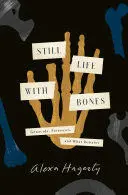u003cbu003eAn anthropologist working with forensic teams and victims families to investigate crimes against humanity in Latin America explores what science can tell us about the lives of the dead in this haunting account of grief, the power of ritual, and a quest for justice.u003c/bu003eu003cbru003eu003cbru003e u003cbu003eAbsorbing . . . multifaceted and elegiac . . . u003ciu003eStill Life with Bonesu003c/iu003e captures the ethos that drives the searchoften tireless and against the oddsfor truth.u003ciu003eThe New York Timesu003c/iu003eu003c/bu003eu003cbru003eu003cbru003eu003ciu003eExhumation can divide brothers and restore fathers, open old wounds and open the possibility of regenerationof building something new with the pile of broken mirrors that is memory, loss, and mourning.u003c/iu003eu003cbru003eu003cbru003eThroughout Guatemalas thirty-six-year armed conflict, state forces killed more than two hundred thousand people. Argentinas military dictatorship disappeared up to thirty thousand people. In the wake of genocidal violence, families of the missing searched for the truth. Young scientists joined their fight against impunity. Gathering evidence in the face of intimidation and death threats, they pioneered the field of forensic exhumation for human rights. u003cbru003eu003cbru003eIn u003ciu003eStill Life with Bones,u003c/iu003e anthropologist Alexa Hagerty learns to see the dead body with a forensic eye. She examines bones for marks of torture and fatal woundshands bound by rope, machete cutsand also for signs of identity: how life shapes us down to the bone. A weaver is recognized from the tiny bones of the toes, molded by kneeling before a loom; a girl is identified alongside her pet dog. In the tenderness of understanding these bones, forensics not only offers proof of mass atrocity but also tells the story of each life lost. u003cbru003eu003cbru003eWorking with forensic teams at mass grave sites and in labs, Hagerty discovers how bones bear witness to crimes against humanity and how exhumation can bring families meaning after unimaginable loss. She also comes to see how cutting-edge science can act as rituala way of caring for the dead with symbolic force that can repair societies torn apart by violence.u003cbru003eu003cbru003eWeaving together powerful stories about investigative breakthroughs, histories of violence and resistance, and her own forensic coming-of-age, Hagerty crafts a moving portrait of the living and the dead.


